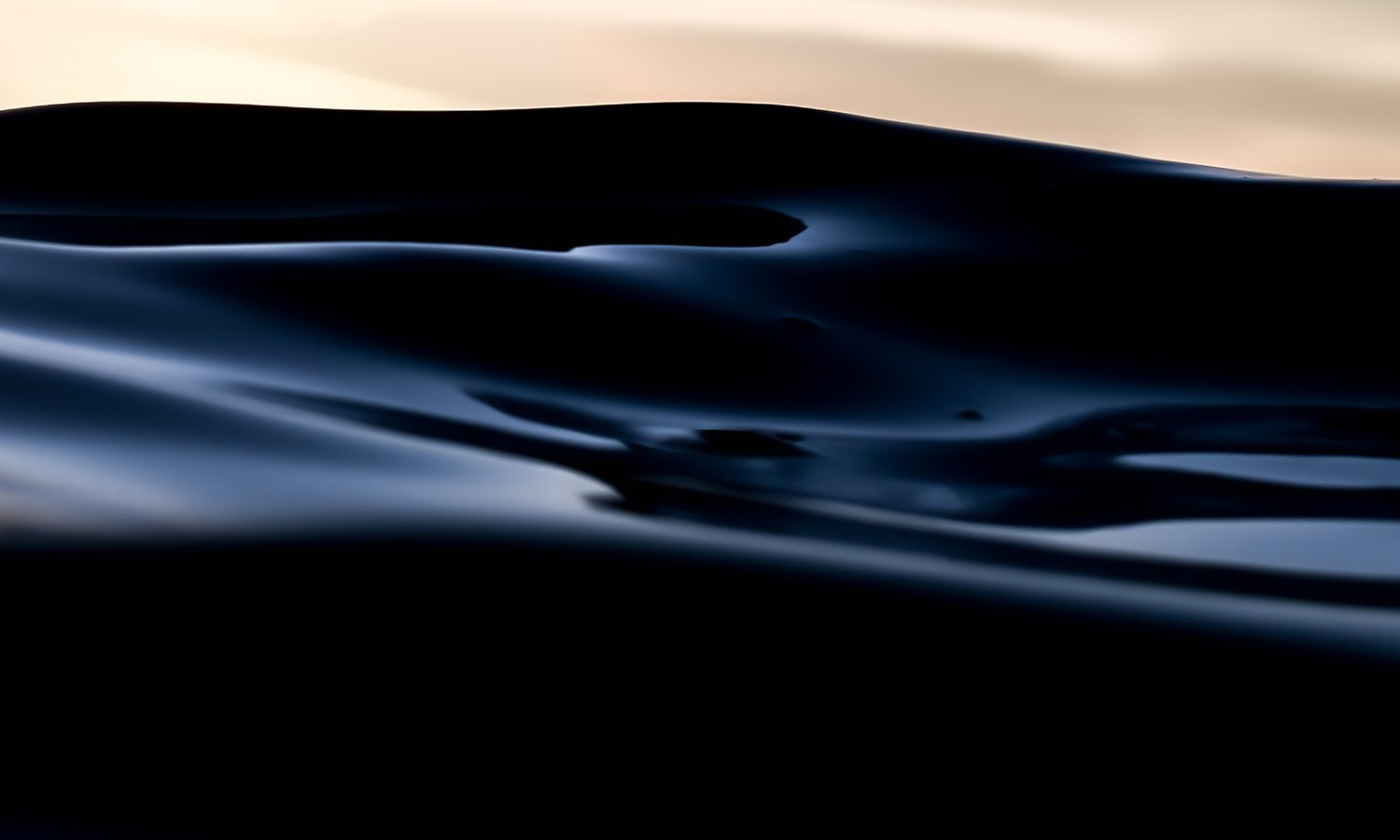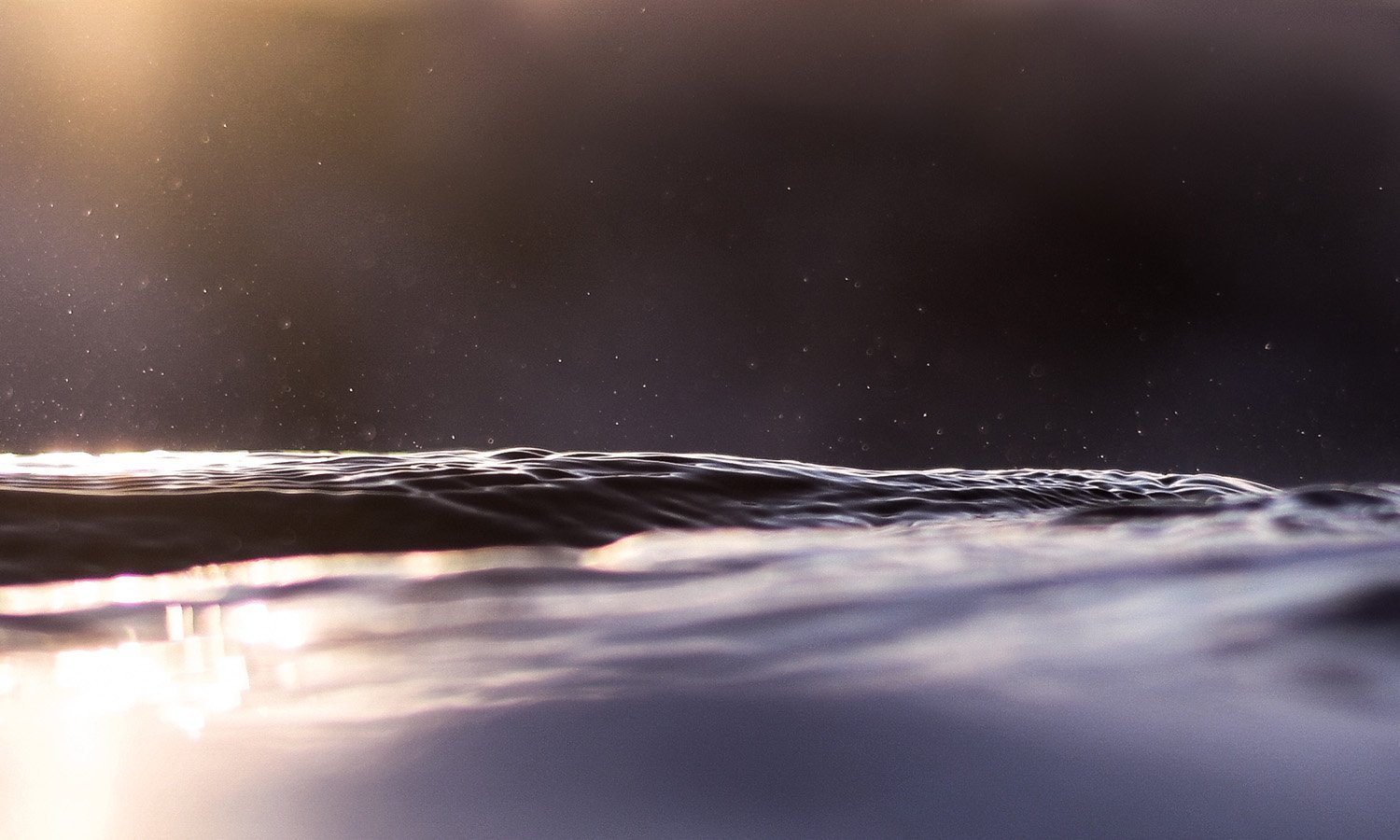IN FOCUS: Katie Rae
The British photographer has a shadowy style that could be described as “ocean noir”.
Katie Rae’s photography captures water at its most mysterious, zeroing in on the fine details of vast expanses, shadowy experiments that simultaneously communicate the intimacy and the unknowability of our oceans. In one recent image, the water looks like deep blue velvet, as if you could curl up in it. In another, a flat rainbow lies across the horizon. A key feature of her work is juxtaposing the ocean and sky, looking up as much as she does down, always letting the light in. There’s a stillness and a slowness to her work, even capturing something as wild and chaotic as the sea.
Katie, 28, grew up in the UK in a town called Leigh-on-sea, a town in the south of England on the coast of the Thames Estuary. Growing up, she was keen on sailing, exploring small islands, open waters and mysterious caves. Now, she splits her time between her home country and Greek islands after her mother moved to Paxos, a Greek island in the Ionian Sea.
After seeing Katie’s photography – a style that we feel could loosely be coined as “ocean noir” – we wanted to talk to her about her beguiling images. Here, she talks about finding freedom and weightlessness in waters around the world. For our latest In Focus, we caught up with Katie to talk about finding peace amongst the waves.
Q & A
You have a really distinct style and aesthetic that seems to focus on the beauty of water itself. How long have you been perfecting it?
Thank you! It's hard to say really, I think I've always had this way of focusing on the smaller details of the bigger things. Paying closer attention to the movements and light in a frame of something that brings me peace. I've always gravitated towards the water. It's fascinating when you really focus your eyes on moving water, it's a very special feeling. I want people to feel it too, so I do my best trying to capture that.
When and how did you become fascinated with water?
For as long as I can remember! Growing up we spent most of our time by the ocean, rain or shine. My parents introduced me to swimming when I was very young and soon after I would take part in competitions and galas. These days I take part in open water charity swims. I recently took part in one in Greece supporting a great charity called the Ionian Foundation.
You live between the UK and the Greek islands, which spots in both countries are your favorite places to photograph and why?
I absolutely love the South West coast of the UK and I'm yet to experience more of England, but I have a soft spot for Croyde and Saunton Sands. It has a great atmosphere whatever the weather. In Greece, there is a beautiful little island called Paxos where my mother lives. It's a little remote which gives it a mystical dreamy feel, with many shades of aquas and deep blues.
How did you fall in love with the water?
When I realized the feelings it gave me. I love how being in the water makes me feel totally free and weightless, taking in all the little details happening around me. I've struggled (like many) with confidence and believing in myself, but floating in the water and feeling all the elements really does wash any worries away.
You say that you love to capture the beauty of the oceans, what do you see while working that demonstrates its fragility?
Plastic! When photographing even in the most remote places you can still find plastic. It is something that is not that apparent until you get in the water. The ocean may sometimes look pristine but more often than not it's hiding its scars below the surface and on our shorelines.
Are you seeing marine ecosystems change in any way because of climate change?
Absolutely, it's heartbreaking to witness. I have witnessed Posidonia seagrass meadows succumb to rising sea temperatures. A marine plant native to the Mediterranean that not only provides shelter for juvenile fish but also acts as a natural carbon sink, an important part of protecting our planet.
Which other photographers have been an inspiration to you, and why?
I must first mention Ray Collins. When I went to Australia in 2015 I was just at the start of wanting to purchase my first water housing (protective camera equipment). I spent the day with him, understanding his gear and floating about in some mega slabs of waves, it was just amazing. When I returned to the UK in 2016, I took the plunge and bought myself a whole new camera set up. It was a big investment and a little daunting, but I knew it would be the best decision – not only to improve my vision, but to start really taking photography seriously. About two weeks after my new setup arrived, I landed a job in India working for a surf and yoga retreat. I threw myself in at the deep end, learning everything I could, watching videos on YouTube of other surf photographers, the ins and outs of my new camera. It was all very exciting. Matt Bagley is another huge inspiration, I feel he captures the true essence of marine life underwater in a really beautiful and minimal way. Lesley Brügger from Iceland creates beautiful abstract scenes. I love her use of space and the dark colors that she captures in nature.
What's the most beautiful thing you've seen while out taking photos in the water?
Technically I wasn't taking pictures as I had forgotten a vital part for my water housing on a boat trip in the Maldives. I was just on the way back to the lodge I was staying in to fetch the vital part when suddenly a huge pod of dolphins were in front of me. I jumped in the water without my camera and rushed to pull my mask up to my eyes. I was surrounded by about 40 dolphins and two calves circling me. It was like something out of a dream, the way they softly swam and made eye contact with me was just such a humbling experience. Though it was a shame I couldn't photograph them, it really was the most beautiful moment I've had in the ocean.
It's fascinating when you really focus your eyes on moving water, it's a very special feeling. I want people to feel it too, so I do my best trying to capture that.
Katie Rae





















